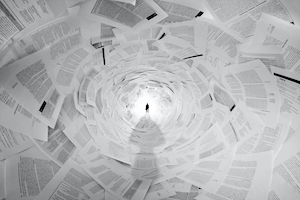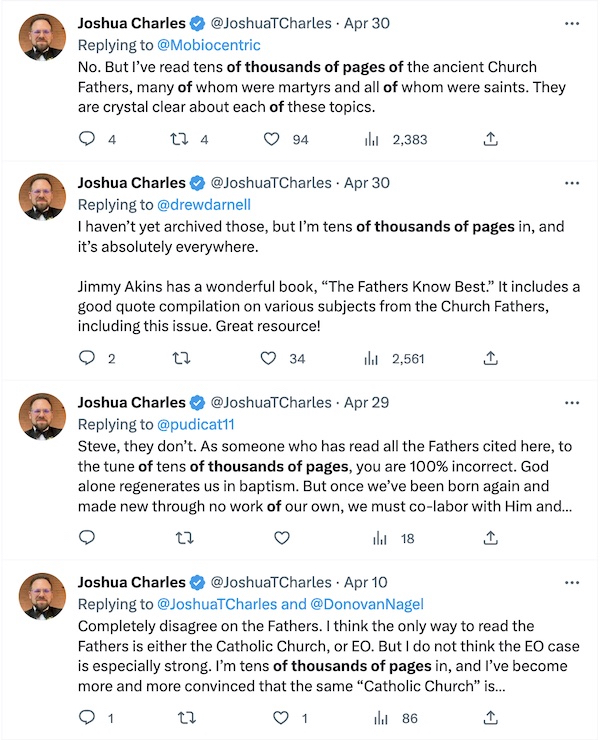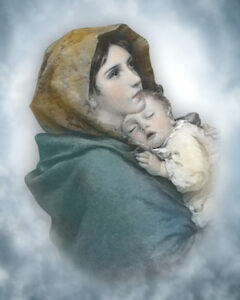
We continue this week with our analysis of the works of Ignatius of Antioch (d. 107 AD). Last week, we assessed the methodology of a typical Roman Catholic apologist who claims to have been “red pilled” into the truth by his writings. Mr. Joshua T. Charles, former White House speech writer, former Protestant and now apologist, reminds his Twitter followers repeatedly that he has read “tens of thousands of pages” of the Early Church Fathers and was surprised to find Roman Catholicism “absolutely everywhere.” As we showed last week, however, Mr. Charles is either highly selective in his reading or highly selective in his use of data—either rejecting that which contradicts his preconceptions, or reinterpreting contrary data as if it supported his position, and in many cases naïvely receptive of data known to be spurious, redacted and fraudulent.
As we noted last week, Mr. Charles claimed that he was surprised to find “profoundly [Roman] Catholic doctrine” in Ignatius’ letters, “point by point.” Of the ten “points” he identified, we will address two today:
1. The Real Presence of Christ in the Eucharist;
3. Christian worship = the sacrifice of the Eucharist;
 Follow
Follow
 Yet, upon inspection it is clear that while he may have looked at tens of thousands of pages, he did not read them all, and those he did read, he interpreted though a medieval Roman Catholic lens instead of in their native historical context. And still others, heavily redacted by the scholars, are made to appear Roman Catholic while obscuring their very “Protestant” underpinnings. This fact the scholars freely and often admit, though Mr. Charles appears to be ignorant of it. And thus, skimming the Early Church Fathers, interpreting them through a carefully crafted medieval lens, swallowing whole the grotesque redactions and intentional mistranslations, Mr. Charles thinks to have arrived at the Church Jesus Christ founded. Instead he has arrived at a tasteless and extravagant imitation of it. And that, says Mr. Charles, is the church to which we should all convert.
Yet, upon inspection it is clear that while he may have looked at tens of thousands of pages, he did not read them all, and those he did read, he interpreted though a medieval Roman Catholic lens instead of in their native historical context. And still others, heavily redacted by the scholars, are made to appear Roman Catholic while obscuring their very “Protestant” underpinnings. This fact the scholars freely and often admit, though Mr. Charles appears to be ignorant of it. And thus, skimming the Early Church Fathers, interpreting them through a carefully crafted medieval lens, swallowing whole the grotesque redactions and intentional mistranslations, Mr. Charles thinks to have arrived at the Church Jesus Christ founded. Instead he has arrived at a tasteless and extravagant imitation of it. And that, says Mr. Charles, is the church to which we should all convert.